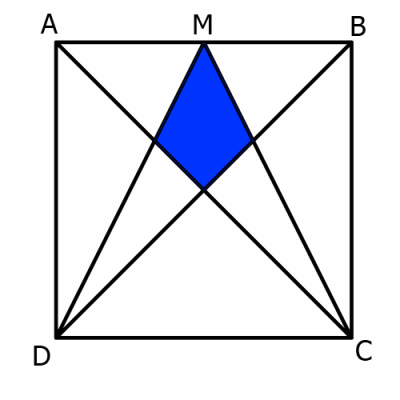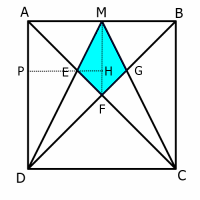Skip over navigation
Or search by topic
Number and algebra
Geometry and measure
Probability and statistics
Working mathematically
Advanced mathematics
For younger learners
Kite in a Square - Similar Figures Approach
Age 14 to 16
Challenge Level 






In Kite in a Square you were asked what fraction of the total area of square ABCD is shaded.
This printable worksheet may be useful: Kite in a Square

Below is an approach for finding the shaded area, using similar triangles, but all the statements have been muddled up.
Using this diagram to help you, can you rearrange the statements back into their original order?

